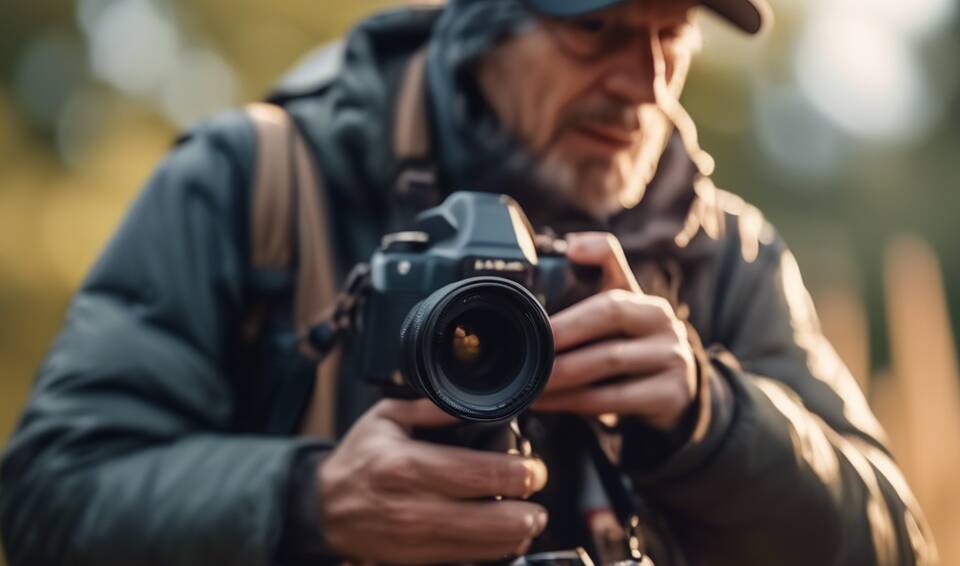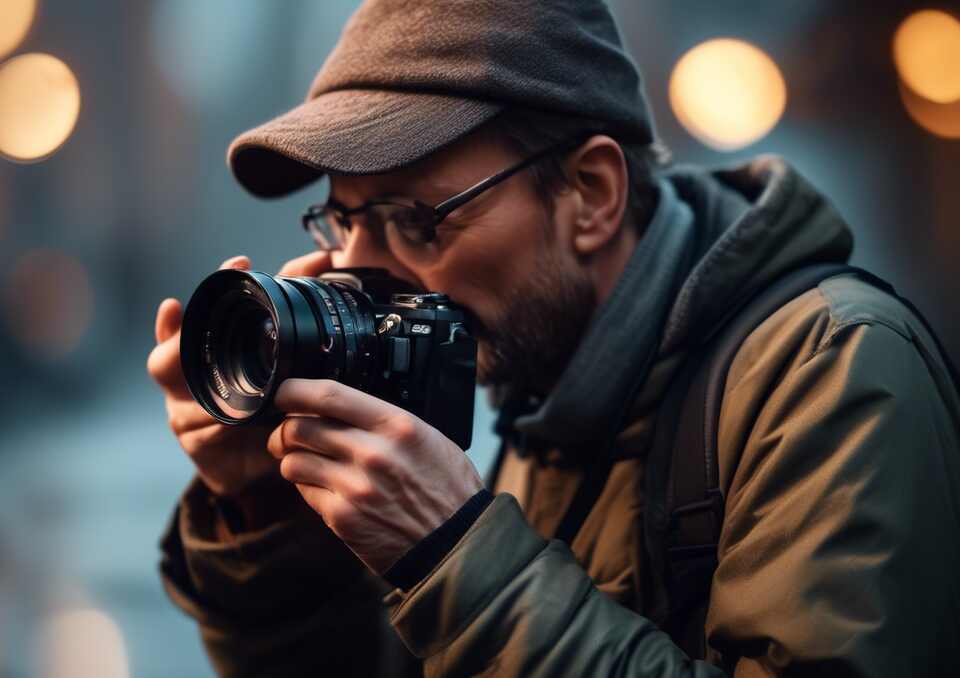Bird photography is a fascinating and rewarding hobby that allows you to capture the beauty and grace of our feathered friends. Composing the perfect bird photo requires a combination of patience, skill, and creativity. Here are some valuable tips to help you take your bird photography to the next level.
Table of Contents
Tips for Composing the Perfect Bird Photo
Understanding Bird Behavior
To capture stunning bird photos, it’s essential to understand the behavior of the birds you are photographing. Study their habits, preferred habitats, and movement patterns. This knowledge will help you anticipate their actions and capture unique moments in your photos.
Choose the Right Equipment
Selecting the right equipment is crucial for bird photography. A telephoto lens with a focal length of 300mm to 600mm is recommended to bring distant birds closer and capture intricate details. A sturdy tripod is also essential to keep your camera stable, especially when using a heavy telephoto lens.
Use Natural Light to Your Advantage
Lighting plays a vital role in photography, including bird photography. Early morning and late afternoon are the best times to capture birds due to the soft, warm light that enhances colors and textures. Avoid harsh midday light as it can create shadows and overexposure in your photos.
Focus on the Eyes
The eyes are the most critical part of any animal portrait, including bird photos. Ensure that the bird’s eyes are sharp and in focus to create a connection between the viewer and the subject. Use a wide aperture to achieve a shallow depth of field, making the eyes stand out against a soft, blurred background.

Experiment with Composition
Get Creative
While composition adds another level of complexity to photography, it also gives you an opportunity to be creative. Try changing your shooting angle or the amount of distance between you and the bird. This can make a big difference in terms of both the amount of the bird’s environment you capture and showing how the bird relates to it. For example, including the berry bush a bird is feeding on, or ripples in the water it is wading through, can convey information about the bird’s life, but also drastically affect the photo’s color balance, geometry, texture, and even mood.
Know the Rule of Thirds
A common pitfall among beginner photographers is to always put the bird in the exact center of the image. It’s an understandable impulse, but one that results in all of your photos looking the same. Instead, experiment with the rule of thirds and place the bird along an invisible line a third of the way from the edge of the image. This is a crude approximation of the golden ratio, a mathematical proportion that appears throughout nature and art, creating a sense of harmony and balance. Experiment with the golden ratio, too, by envisioning the invisible lines a little closer to the center of the frame.
Tell a Story
In addition to composing a visually appealing photo, you should think about what the image will say to people who weren’t there when you took the shot. If the bird is reacting to something (such as a potential predator or prey), capturing that in the image will include viewers in the action and give them a glimpse into the life of that bird. For flight shots, consider whether viewers will benefit more by seeing where the bird is going (by putting more space in front of the bird) or where the bird has been (by, say, including the perch it took off from). People love photos that tell a story.
Patience is Key
Patience is a virtue in bird photography. Birds are unpredictable creatures, so be prepared to wait for the perfect moment to capture your shot. Stay still, observe the bird’s behavior, and be ready to click the shutter when the right opportunity presents itself.
Get Closer to the Birds
Getting closer to your bird subjects allows you to capture more intimate and detailed photos. Use natural camouflage, such as a bird blind or foliage, to conceal yourself and get closer to the birds without disturbing them. Remember to respect the birds’ space and habitats while photographing them.
Post-Processing Techniques
Post-processing can enhance your bird photos and bring out their full potential. Use editing software to adjust exposure, contrast, sharpness, and colors to create stunning and polished images. Avoid over-editing, as natural-looking photos are often the most captivating.
Bird photography is a captivating art form that allows you to share your passion for birds with others. Share your best photos on social media, photography forums, or in exhibitions to inspire and connect with fellow bird and photography enthusiasts.
Embrace Your Inner Artist
Try to avoid rationalizing with canned rules and instead let your visual cortex identify what looks good. Humans are a highly visual species, and our brains excel at telling us what looks pleasing or when something seems out of balance. The more you learn to listen to your inner artist, the better you’ll get at portraying birds in a way that everyone can enjoy.
By following these tips and techniques, you can compose the perfect bird photo that captures the beauty, grace, and essence of these magnificent creatures. Embrace the challenge, hone your skills, and immerse yourself in the world of bird photography to create breathtaking and memorable images.

Techniques for Capturing Birds in Natural Settings
Tips for Capturing Stunning Bird Photos in Their Natural Habitat
Bird photography in natural settings can be a thrilling and rewarding experience for any photographer. From vibrant colored birds in tropical forests to majestic raptors in mountainous regions, capturing these winged creatures in their natural habitat requires skill, patience, and an eye for detail. Here are some techniques to help you compose the perfect bird photo:
Understanding Bird Behavior
To capture birds in their natural settings, it is crucial to understand their behavior and habits. Different bird species have unique characteristics, such as feeding patterns, mating rituals, and preferred perching spots. By researching and observing the birds you wish to photograph, you can anticipate their movements and behaviors, increasing your chances of capturing that perfect shot.
Use the Right Equipment
Having the right photography equipment is essential for bird photography. A high-quality camera with a telephoto lens will allow you to capture birds from a distance without disturbing them. A tripod can also be beneficial, especially when photographing birds in flight or in low-light conditions. Additionally, consider investing in a camera with fast autofocus capabilities to ensure sharp and clear images.
Patience is Key
Patience is a virtue when it comes to bird photography. Birds can be elusive and easily spooked, so it is essential to remain still and quiet while waiting for the perfect moment to capture your shot. Find a comfortable position, observe the birds’ behavior, and be prepared to wait for the right opportunity to take your photo.
Composition and Framing
When composing your bird photos, consider the rule of thirds to create visually appealing images. Position the bird off-center in the frame to add interest and balance to the photo. Pay attention to the background and try to eliminate any distractions that may take away from the main subject. Experiment with different angles and perspectives to find the most captivating shot.
Lighting and Settings
Lighting plays a crucial role in bird photography. The golden hours of sunrise and sunset provide soft, warm light that can enhance the colors and textures of the birds’ feathers. Avoid harsh midday sun, as it can create unflattering shadows and blown-out highlights. Experiment with different camera settings, such as aperture and shutter speed, to achieve the desired effect in your photos.
Respect Wildlife
Above all, remember to respect the wildlife and their natural habitat while capturing bird photos. Avoid disturbing the birds or their nesting sites, and observe them from a distance to minimize your impact on their behavior. By practicing ethical bird photography, you can enjoy capturing stunning images while ensuring the well-being of the birds.
Conclusion
Capturing the perfect bird photo requires a combination of skill, patience, and technique. By following the tips for composing the perfect bird photo and implementing the techniques for capturing birds in natural settings discussed in this article, you can significantly enhance the quality of your bird photography. Remember to stay respectful of the birds and their habitats, prioritize their well-being above getting the perfect shot, and always aim to portray them in their natural beauty.
With the right approach, equipment, and mindset, you can create stunning bird photos that not only showcase the beauty of these magnificent creatures but also evoke emotions and inspire awe in those who view your work. So, grab your camera, head out into nature, and let your passion for bird photography soar to new heights. Happy birding and happy shooting!


